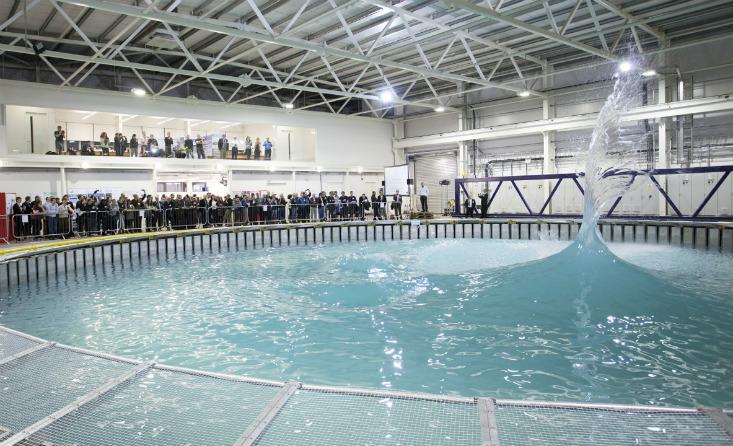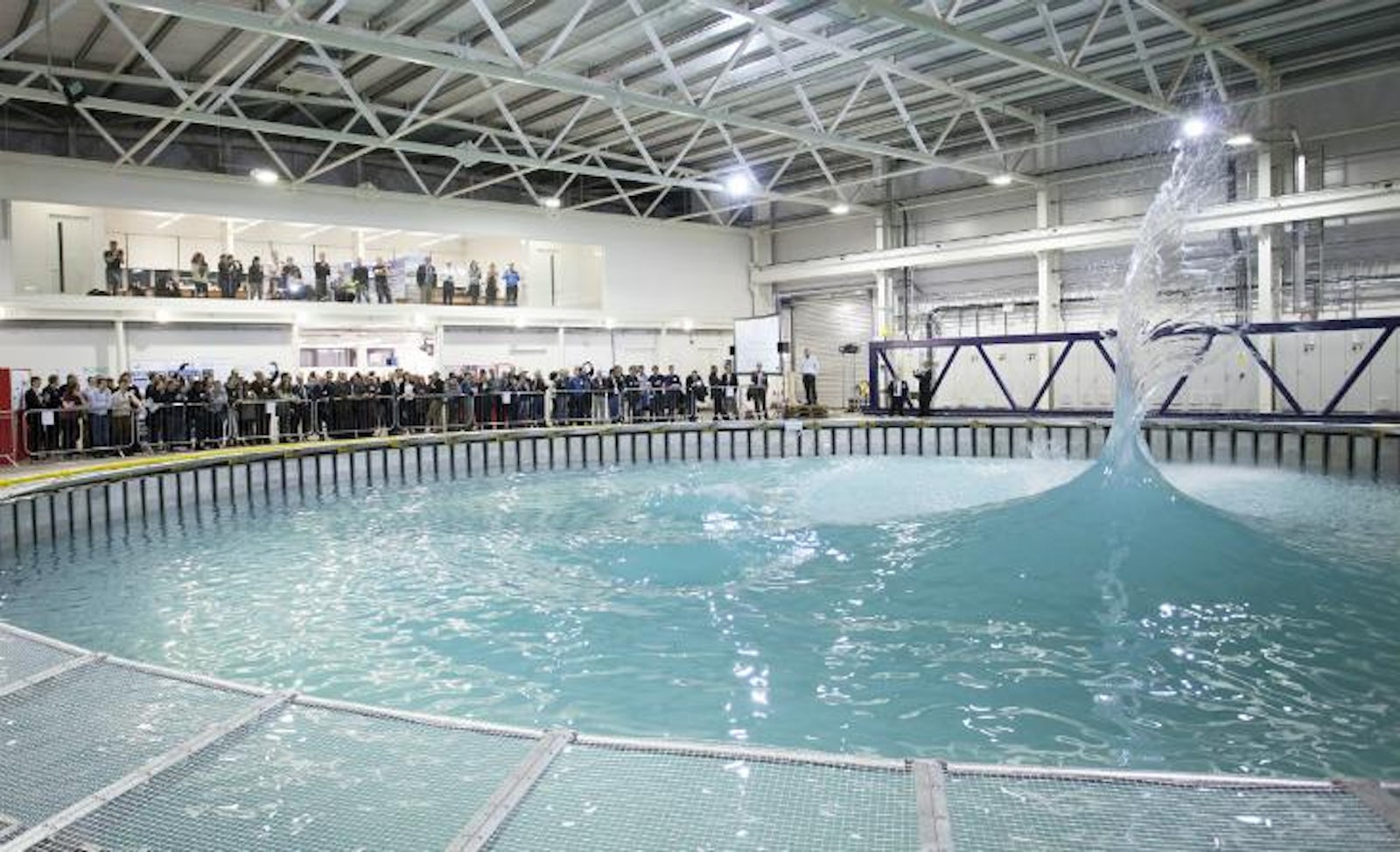
Every day on Canada’s Atlantic coast, just northeast of Maine, a gargantuan amount of water rushes through rocky cliffs into and out of the Bay of Fundy. With currents typically reaching speeds of 12 knots, or 20 feet per second, and a height of over 50 feet, the tide there is one of the largest in the world. The conditions are ideal for tidal generators, which could feed steady, reliable green energy into the electricity grid—if engineers can design tidal turbines that successfully harness the power of those turbulent streams.
To help meet this challenge, engineers at the University of Edinburgh have constructed the most remarkable wave pool on the planet. The FloWave Ocean Energy Research Facility, which opened last month, is capable of simulating currents of 14 knots and producing 90-foot-high waves.
Stuart Brown, the facility’s CEO, says most existing wave pools are rectangular, like swimming pools. “They push waves in one direction to crash at the end, like at a beach,” he says. These pools are primarily used to test equipment used in offshore oil and gas drilling or to validate designs for shipping. “Those pools are quite sophisticated, and good at what they want to do,” he says. But to test tidal-power equipment, Edinburgh researchers needed a more flexible device. So FloWave features a circular tank that allows it to generate waves from multiple directions that crash into each other in the middle, mimicking the tumult of stormy seas. Here, tidal power companies can evaluate turbine designs and figure out the optimal layout for an array of turbines, where wake effects can sap efficiency.

Renewable energy developers have only recently gotten serious about marine energy, particularly energy drawn from waves or tides, and now the race is on to build the world’s first wave farms and tide farms. It’s likely that a tide farm will come first, as such a facility could be built relatively close to shore, and since tides would supply predictable power. But the engineers designing the tidal turbines have some work to do before their devices can splash down into the ocean. “Turbulence is the elephant in the room,” Brown says. “Commercial developers are keen to see how turbulence reduces the efficiency of a device, and reduces gigawatts out.”
Brown explains that they’ve learned this lesson from wind-farm developers, who ran into unexpected problems when tall wind turbines sprouted up. In a turbulent flow, either of air or water, nearby currents move in different directions, so the lift force on the turbine blade is uneven. “In air it’s not that big an issue,” Brown says, “but in water, which is 840 times denser, there are huge forces involved.” Turbulence also causes vibrations on the blades that travel down to the drive train. Those vibrations cause material fatigue, and may cause a turbine to break down sooner than expected, requiring the operator to haul it up from the seafloor for repair. “If a turbine can go an extra year before being pulled up, that’s a big cost saving,” Brown says.
The FloWave engineers designed their tank to have lower turbulence than the actual ocean, for two reasons. First, the smooth water flow provides a good environment to detect turbulence caused by the turbines themselves, which is important when they’re placed in an array. Second, the engineers wanted to have a low baseline of turbulence so they could then use equipment to increase the turbulence level in a controllable way. “We can create what we think of as designer turbulence,” Brown says. While the engineers are still working on this turbulence system, it will likely use a combination of current speeds and carefully designed obstacles.

As tidal-energy startups look to tap the power of the roiling seas, the FloWave pool may become a necessary proving ground. “We can simulate site conditions before putting an array in the water,” Brown says.“If you’re an investor, this would give you some comfort before you sign the check for the next 100 million.”
Eliza Strickland is an associate editor for the science and technology magazine IEEE Spectrum.


























